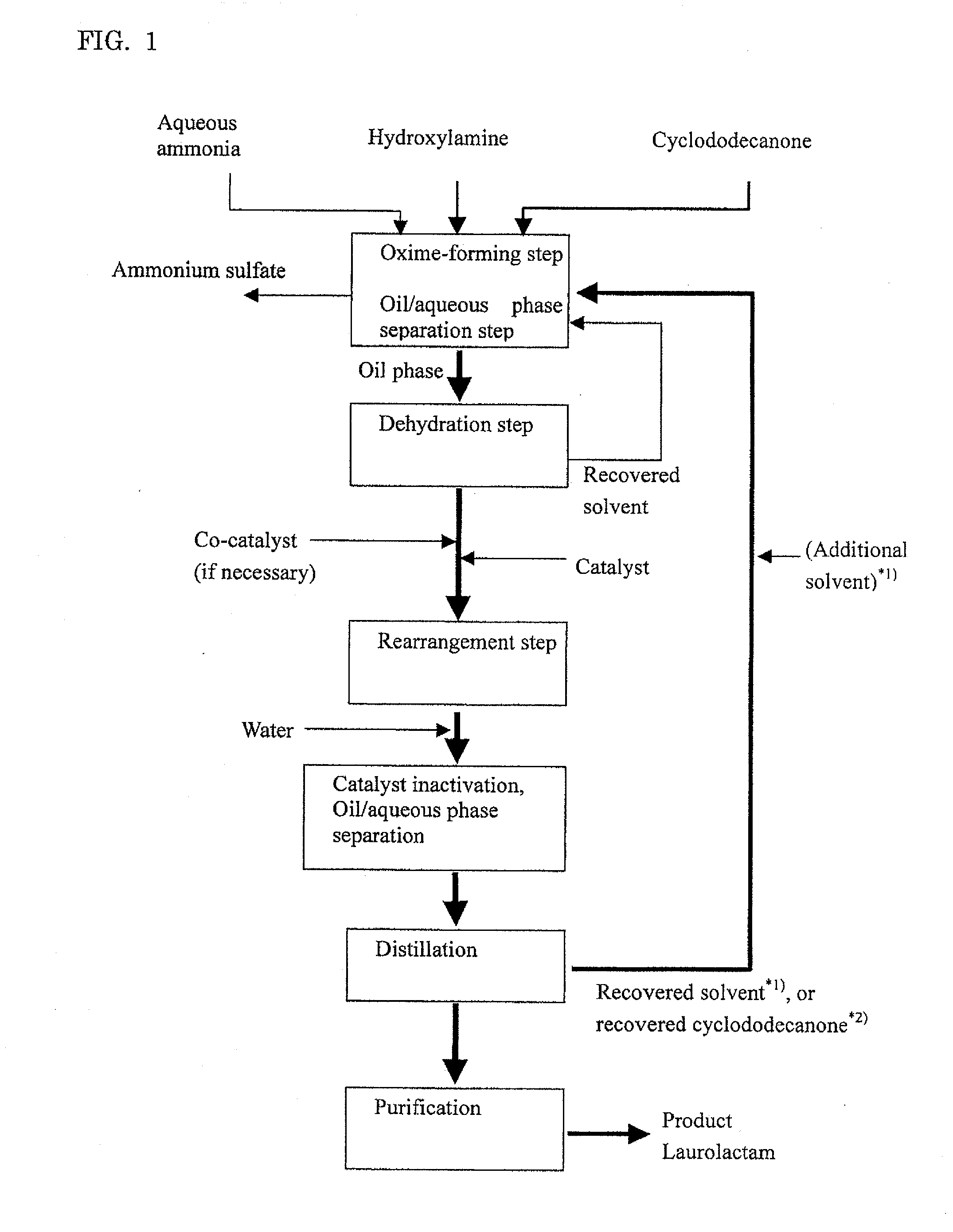Process for producing laurolactam
a technology of laurolactam and process, applied in chemical recycling, chemical apparatus and processes, organic chemistry, etc., can solve the problems of large amount of treatment facilities and energy, large processing facilities, and complex process, and achieve the effect of convenient laurolactam production process, simplified production process, and easy recycling
- Summary
- Abstract
- Description
- Claims
- Application Information
AI Technical Summary
Benefits of technology
Problems solved by technology
Method used
Image
Examples
examples
[0112]The present invention will be specifically described with reference to Examples. These examples are intended to illustrate embodiments of the present invention, but the present invention is not limited to the examples.
embodiment a
[0113]Embodiment A will illustrate an example where cyclododecanone is used in an excessive amount to hydroxylamine.
example a-1
Oxime-Forming Step, Oil / Aqueous Phase Separation Step and Dehydration Step
[0114]Into a pillow type reactor with a 10 liter liquid phase zone which was internally divided into four chambers each of which was equipped with an agitating blade were fed a combination of cyclododecanone (Tokyo Chemical Industry Co., Ltd.) molten by heating at 80° C. and recovered cyclododecanone described below at 1 kg / h and a 15.2% by weight aqueous solution of hydroxylamine sulfate (Wako Pure Chemical Industries, Ltd.) at 1.2 kg / h, and a reaction was conducted at 97° C. while pH of the aqueous phase was adjusted to pH 6 by adding 25% ammonia water (an average residence time: 4 hours). Without cooling, the effluent from the reactor was separated into an oil phase and an aqueous phase.
[0115]To the oil phase thus obtained was bubbled nitrogen gas to dehydrate the oil phase. After dehydration, water concentration in the oil phase was measured by Karl Fischer's method, giving a measured value of 60 ppm. The ...
PUM
| Property | Measurement | Unit |
|---|---|---|
| melting point | aaaaa | aaaaa |
| temperature | aaaaa | aaaaa |
| temperature | aaaaa | aaaaa |
Abstract
Description
Claims
Application Information
 Login to View More
Login to View More - R&D
- Intellectual Property
- Life Sciences
- Materials
- Tech Scout
- Unparalleled Data Quality
- Higher Quality Content
- 60% Fewer Hallucinations
Browse by: Latest US Patents, China's latest patents, Technical Efficacy Thesaurus, Application Domain, Technology Topic, Popular Technical Reports.
© 2025 PatSnap. All rights reserved.Legal|Privacy policy|Modern Slavery Act Transparency Statement|Sitemap|About US| Contact US: help@patsnap.com



